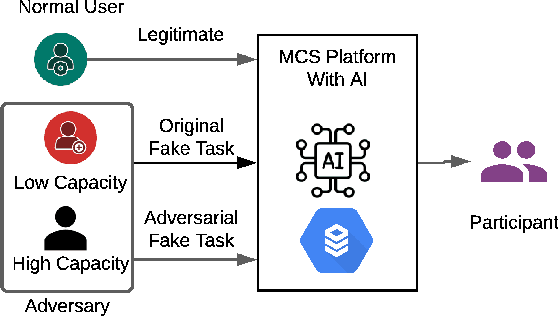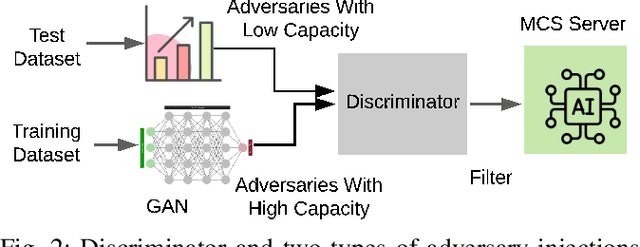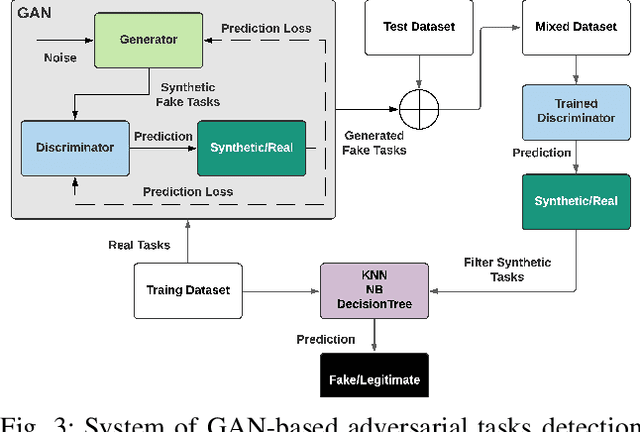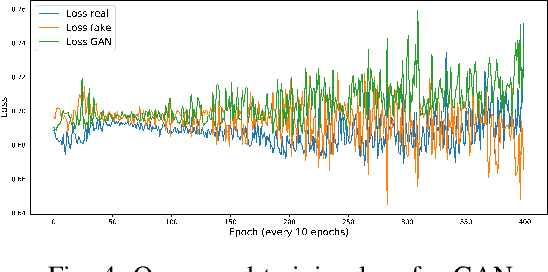Generative Adversarial Network-Driven Detection of Adversarial Tasks in Mobile Crowdsensing
Paper and Code
Feb 16, 2022



Mobile Crowdsensing systems are vulnerable to various attacks as they build on non-dedicated and ubiquitous properties. Machine learning (ML)-based approaches are widely investigated to build attack detection systems and ensure MCS systems security. However, adversaries that aim to clog the sensing front-end and MCS back-end leverage intelligent techniques, which are challenging for MCS platform and service providers to develop appropriate detection frameworks against these attacks. Generative Adversarial Networks (GANs) have been applied to generate synthetic samples, that are extremely similar to the real ones, deceiving classifiers such that the synthetic samples are indistinguishable from the originals. Previous works suggest that GAN-based attacks exhibit more crucial devastation than empirically designed attack samples, and result in low detection rate at the MCS platform. With this in mind, this paper aims to detect intelligently designed illegitimate sensing service requests by integrating a GAN-based model. To this end, we propose a two-level cascading classifier that combines the GAN discriminator with a binary classifier to prevent adversarial fake tasks. Through simulations, we compare our results to a single-level binary classifier, and the numeric results show that proposed approach raises Adversarial Attack Detection Rate (AADR), from $0\%$ to $97.5\%$ by KNN/NB, from $45.9\%$ to $100\%$ by Decision Tree. Meanwhile, with two-levels classifiers, Original Attack Detection Rate (OADR) improves for the three binary classifiers, with comparison, such as NB from $26.1\%$ to $61.5\%$.
 Add to Chrome
Add to Chrome Add to Firefox
Add to Firefox Add to Edge
Add to Edge